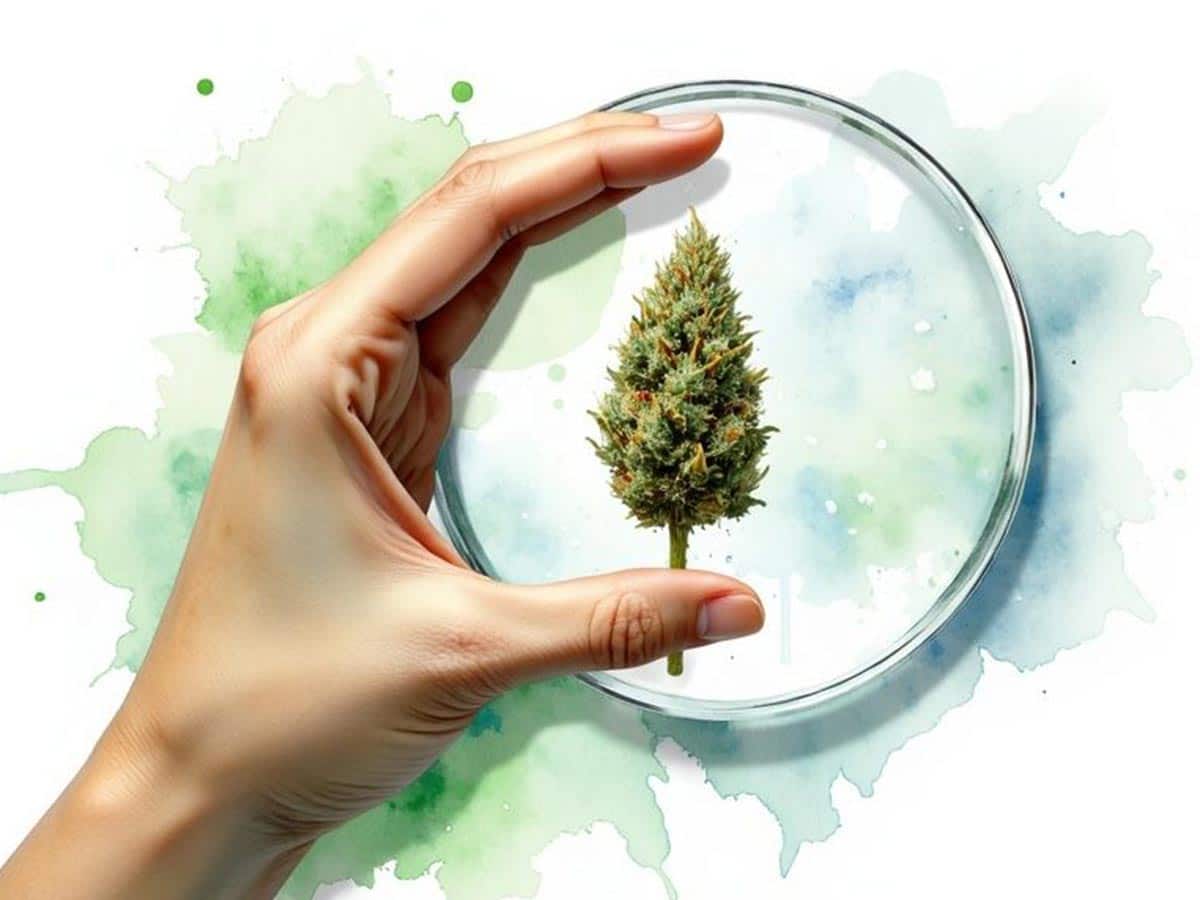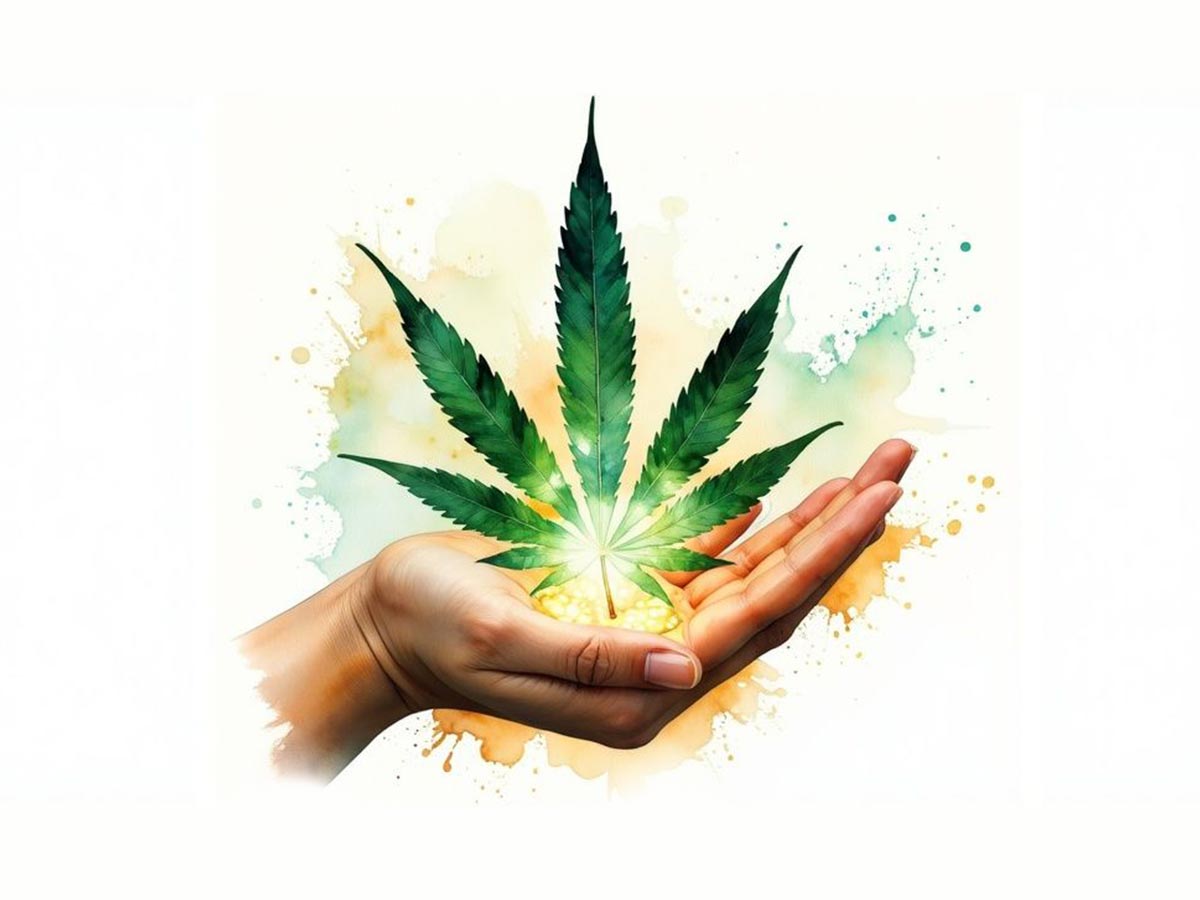You’ve got a new batch of cannabis, but something seems… off. Is it your imagination, or could it be sprayed with something? Spotting contaminated weed is easier than you think. It boils down to trusting your senses and running a few simple checks. A tell-tale sign is often a harsh chemical smell, a strange plastic-like shine on the buds, nugs that feel unnaturally dense, or a harsh, acrid taste when you light up. Knowing what to look for isn’t just about being a discerning consumer—it’s the first and most critical step to protecting your health.
Why Identifying Sprayed Weed is a Non-Negotiable Skill
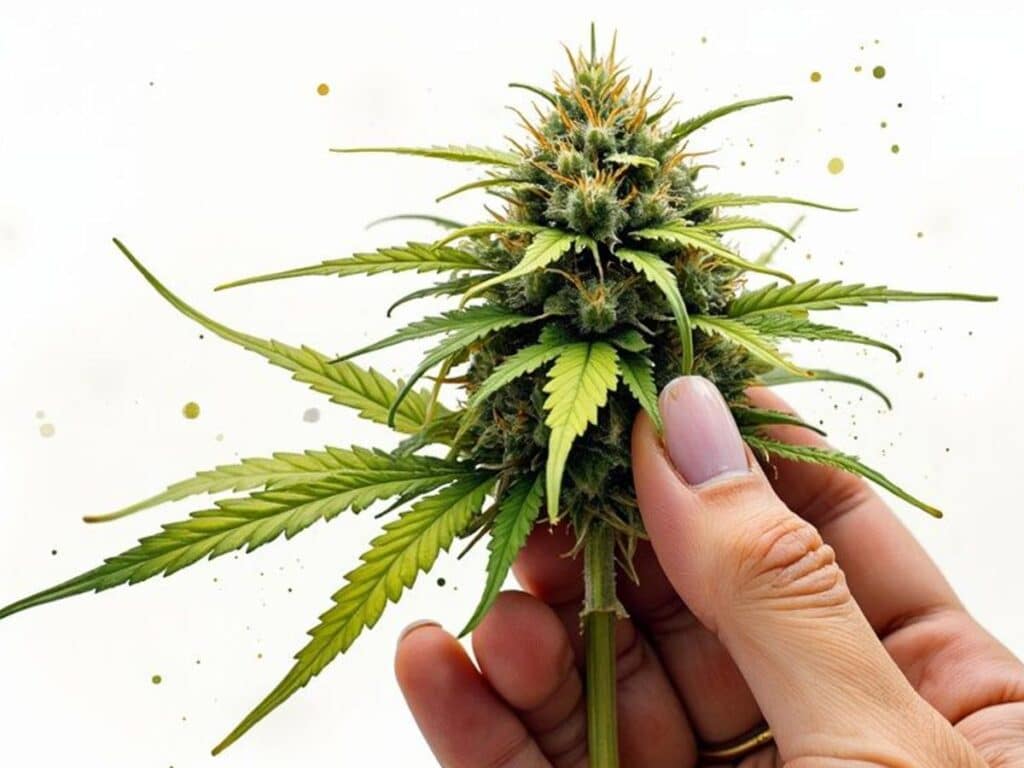
Before we dive into the “how-to,” let’s be clear on why this is so important. This isn’t just about avoiding a bad taste or a weak high; it’s about safeguarding your health from a hidden minefield of contaminants. The cannabis you buy could be laced with anything from a harmless (but deceptive) additive to something genuinely dangerous.
Often, the motive is simple greed. Some sellers spray their buds with sugar water, hairspray, or even fine silica powder just to add weight. It’s a cheap trick to make a small batch seem heavier, turning a bigger profit at your expense. While that might not sound terrifying, do you really want to inhale burnt sugar or the chemical cocktail from a can of hairspray? That’s a fast track to lung irritation.
Beyond Weight: The More Sinister Contaminants
The problem goes much deeper than just bulking agents. A far more dangerous trend is spraying low-quality hemp with synthetic cannabinoids, often sold as K2 or Spice, to mimic the effects of high-THC cannabis. These lab-made chemicals can trigger severe and unpredictable reactions, from intense paranoia and hallucinations to serious cardiac events. The history and documented dangers of these substances are well-covered on platforms like Wikipedia.
Even cannabis from seemingly legitimate sources can hide unwanted chemicals. Agricultural pesticides are a massive concern.
A sobering 2018 report analyzing legal cannabis products in Washington State found that a staggering 84.6% of tested samples contained significant pesticide residues. These weren’t harmless compounds; they included known carcinogens and neurotoxins. This highlights a systemic problem that even regulated markets struggle with. You can read the full research on pesticide prevalence to see the scope of the issue for yourself.
This isn’t about fear-mongering. It’s about empowering you with a realistic picture of the potential risks.
Knowing what could be lurking in your weed is the most critical first step. It transforms you from a passive consumer into an informed inspector, setting the stage for the practical, actionable tips we’re about to cover.
Using Your Senses to Spot Red Flags
When it comes to figuring out if your cannabis has been tampered with, your best tools are the ones you were born with: your eyes, nose, and fingertips. Before you even think about grinding it up, a quick but careful sensory check can reveal almost everything you need to know.
This isn’t about a vague feeling that something is “off.” It’s about training your senses to catch specific, undeniable warning signs. Think of it as your personal quality control checkpoint. Start by giving the bud a good, hard look under bright light.
A Closer Look: Uncovering Visual Clues
Good, clean cannabis has a distinct, natural appearance. Those tiny, sparkling, mushroom-shaped crystals you see are called trichomes—the hallmark of quality and potency. Anything that deviates from that natural, crystalline look should immediately raise your suspicions.
Here are the visual red flags to watch for:
- A Plastic-Like Sheen: Does the bud have a weird, uniform gloss, almost like it’s been coated in a clear lacquer? This is a classic sign of hairspray or a sugar-water spray. Natural trichomes sparkle and refract light individually; they don’t create a wet, painted-on shine.
- Chalky or Powdery Film: If you spot a dusty, white, or off-white coating, you could be looking at mold or a deliberately added bulking agent like talc. Actionable Tip: Rub a small piece between your fingers. If it leaves behind a powdery residue, that’s a major warning sign.
- Unnatural “Crystals”: Some dealers try to mimic trichomes by adding fine sand or even tiny glass particles. If the “crystals” look more like grains of salt or don’t seem naturally attached to the plant, steer clear.
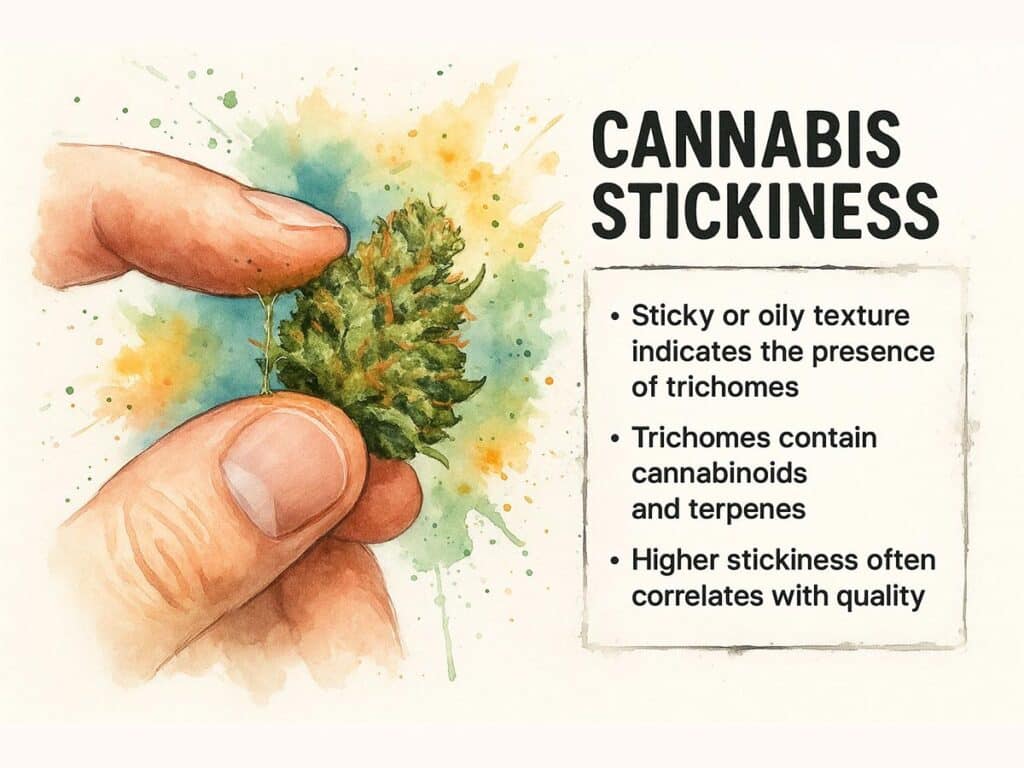
As this graphic shows, what you feel is just as telling as what you see. An unnatural stickiness or an oily film left on your fingers after handling is a dead giveaway that something is wrong.
Trusting Your Nose and Hands
Your sense of smell and touch are your next lines of defense. The incredible aroma of quality cannabis comes from its terpene profile—a complex blend of scents ranging from earthy pine and sharp citrus to sweet berries. Anything that smells synthetic is a problem.
A harsh, chemical smell, like perfume, air freshener, or Windex, is an immediate red flag. This indicates an attempt to mask the smell of low-quality bud or the presence of a nasty spray.
If it smells more like a chemical factory than a garden, stay away. The rich, pungent aroma of clean cannabis is hard to fake, and a synthetic or acrid scent is a dead giveaway that something is wrong.
Finally, get a feel for it. Gently squeeze a nug between your fingers. Does it feel oddly dense or unnaturally heavy for its size? That could point to bulking agents. If the bud feels sticky in a weird, glue-like way and leaves a strange film on your skin, it has almost certainly been sprayed. Natural cannabis is sticky from resin, but it shouldn’t feel like you just touched a sticker. This tactile clue, combined with your visual and smell tests, creates a powerful, multi-sensory toolkit for spotting contaminated weed.
Natural vs. Sprayed Cannabis: A Quick-Reference Guide
To make it even simpler, here’s a cheat sheet. Use this to compare what you should be seeing, smelling, and feeling with clean flower versus the red flags that suggest contamination.
| Indicator | What to Expect from Clean Cannabis | Red Flags for Sprayed Cannabis |
|---|---|---|
| Look | Sparkly, distinct trichomes; natural green/purple/orange hues. | A uniform, plastic-like sheen; a chalky white powder; “crystals” that look like sand or glass. |
| Smell | Complex, natural aromas (pine, citrus, berry, earth); pungent and fresh. | Harsh chemical smells (perfume, cleaner); an unusually sweet, synthetic scent; or no smell at all. |
| Touch | Sticky from resin, but breaks apart; feels light and springy. | Glue-like stickiness that leaves a film on fingers; feels unnaturally dense or heavy; crumbles into dust. |
Keeping these simple cues in mind is your most effective, on-the-spot method for ensuring what you have is clean and safe.
Taking a Closer Look With Simple At-Home Tests
When your senses are screaming “warning” but you want more definitive proof, a few easy at-home tests can give you a much clearer picture. These methods go beyond a quick look and smell, offering more solid evidence of whether your cannabis has been tampered with. Best of all, you don’t need any fancy lab equipment—just a bit of common sense and a careful eye.
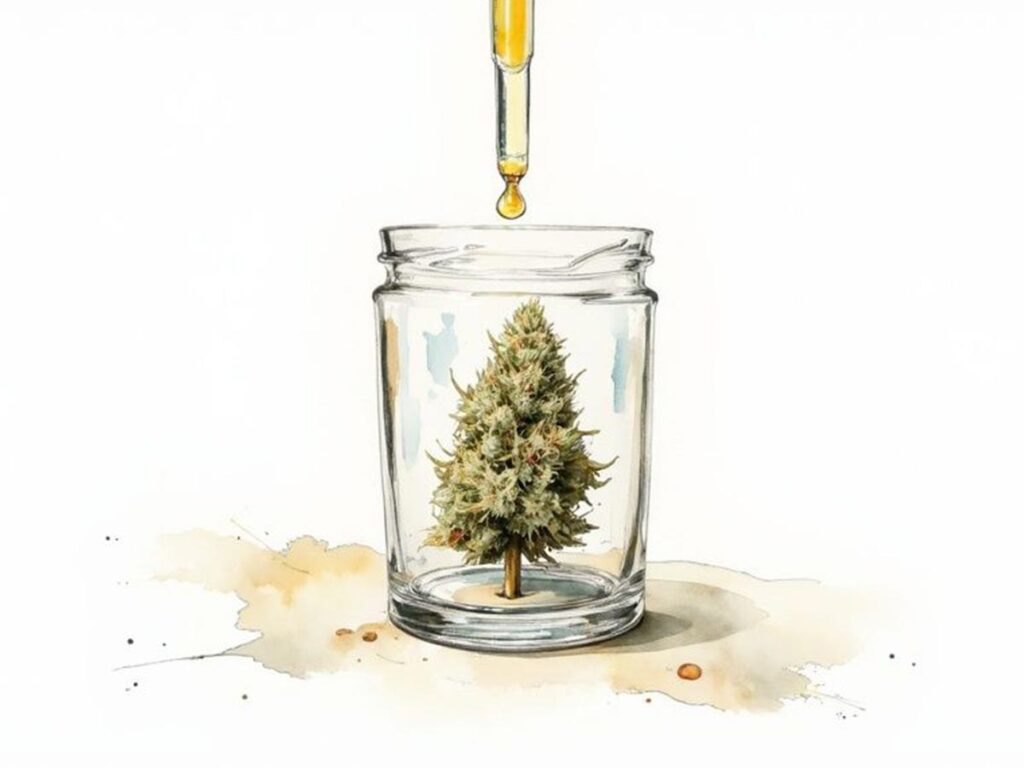
These kinds of checks are becoming more common because people are rightly concerned about what they’re consuming. A 2019 report from California found that around 70% of consumers felt that pesticide use was a risk, with more than half willing to pay more for clean, tested cannabis. This shows just how important it is to have reliable ways to check your own supply. You can explore these consumer concerns regarding cannabis pesticides to understand the full context.
The Crackle and Spark Test
One of the oldest tricks in the book is the burn test. Carefully light a tiny piece of a bud and listen closely.
Clean, well-cured cannabis should burn smoothly and quietly. But if it’s been hit with chemical additives, pesticides, or even something as simple as sugar water, you’ll often hear a distinct crackling or popping sound. In some cases, you might even see tiny sparks, like a miniature firecracker.
This happens because you’re igniting foreign substances. Think about a clean-burning campfire—if you toss in something with chemicals, it sputters and protests. That’s exactly what’s happening here. A quiet, steady burn is the gold standard.
Reading the Ash: The Ultimate Tell
What’s left behind after the burn test—the ash—is another huge clue. The color and consistency of the ash can tell you volumes about what was in that bud. This is arguably the most trusted at-home method for spotting sprayed weed.
Here’s a simple breakdown of what to look for:
- Clean Cannabis: Burns down to a light gray or whitish ash. It’s typically soft and fluffy, falling apart the moment you touch it.
- Sprayed Cannabis: Leaves behind a hard, black, and sometimes oily ash. This dark, dense chunk often holds its shape even after you tap it and might feel greasy or gritty if you rub it between your fingers.
A hard, black ash is a massive red flag. It’s a clear sign that something besides pure plant matter was combusted, leaving behind a nasty chemical or carbon-heavy residue.
A Magnified Inspection
Your eyes can only see so much. For a truly up-close-and-personal look, a cheap magnifying glass or a jeweler’s loupe is a game-changer. This lets you inspect the bud’s surface on a near-microscopic level, making it much easier to spot the difference between natural plant parts and suspicious contaminants.
Under magnification, you can clearly see the plant’s trichomes—the tiny, crystal-like glands that look like little mushrooms. Once you know what clean trichomes look like, contaminants become obvious:
- Added Powders: Silica or other fillers will look like a chalky film caked onto the surface, obscuring the natural trichomes.
- Crystalline Additives: Things like sugar or even fine glass particles will show up as sharp, angular grains that look completely out of place next to the organically-shaped trichomes.
- Sprays: A chemical spray can create a uniform, almost plastic-like sheen over the entire bud, making the trichomes look like they’re shrink-wrapped or fused together.
Getting this close makes it nearly impossible for anything extra to hide. It’s the final piece of evidence you need to know for sure whether your weed has been sprayed.
Getting to Know the Usual Suspects
To effectively spot sprayed weed, you need to know what you’re up against. It’s not just about a simple pass/fail test; it’s about understanding what kind of contaminants might be on your flower and why they’re there.
Most of the time, adulterants fall into two buckets. First, you have substances designed to rip you off by adding weight. Second, and far more concerning, are dangerous chemicals sprayed onto the plant for other sinister reasons. Both are bad news for your health and your experience.
Stuff That Adds Weight and Sparkle
The most common reason for spraying cannabis is plain old greed. Unscrupulous dealers will coat buds in all sorts of things to make them heavier, which means more profit for them and a garbage product for you.
- Sugar Water: A classic trick that adds a sticky feel and a surprising amount of weight. It’s used to make low-grade weed look like it’s dripping with resin. The giveaway? When burned, the smoke is incredibly harsh, and the caramelized sugar leaves a hard, black ash that won’t flake away.
- Silica or Sand: I’ve seen this more than a few times. Tiny particles of sand or quartz are sprayed on to mimic the crystal-like shimmer of trichomes. Not only is it a rip-off, but inhaling that abrasive dust can seriously damage your lungs. Long-term exposure could even lead to a nasty condition called silicosis.
- Hairspray or Adhesives: Believe it or not, some people use hairspray to make old, crumbly buds look fresh and sticky. This introduces a whole mess of toxic chemicals that you should never, ever inhale. This one is usually easy to catch thanks to its weird, unnatural chemical or perfume smell.
The entire point of these additives is to deceive you. What might look like a dense, frosty nug could just be a low-quality flower caked in sand and sugar. That’s why you can’t rely on looks alone.
The Scary Truth About Synthetic Cannabinoids
Now for the truly dangerous stuff: synthetic cannabinoids. These are potent, lab-made chemicals designed to mimic THC but are wildly unpredictable and far more dangerous. Dealers spray these chemicals on cheap cannabis or even inert hemp and pass it off as premium weed.
This is the chemical structure of JWH-018, one of the first synthetic cannabinoids found in products like ‘Spice’ and ‘K2’.
You don’t need a chemistry degree to see that this is a complex, lab-created drug, not something that grows on a plant. And its effects are nothing like natural THC.
Consuming this stuff can trigger a serious health crisis, from extreme anxiety and psychosis to cardiac arrest. If you’re someone who already struggles with anxiety, getting clean flower is critical. Knowing the best cannabis strains for anxiety is a great start, but synthetics will do the exact opposite of what you want, often causing intense panic and paranoia. Smoking sprayed weed turns a therapeutic ritual into a game of Russian roulette with your health.
Stick to Safe Sources and Lab-Verified Products
Look, those at-home visual and smell tests are fantastic first-line defenses, but they aren’t foolproof. They simply can’t detect every potential contaminant.
If you want to be 100% certain your cannabis is clean and free from pesticides, heavy metals, or other nasty surprises, the only way is through professional lab verification and sourcing from people you trust. This is the gold standard, period.
In any legal market, this proof comes in the form of a Certificate of Analysis (COA). Think of it as a comprehensive report card for that specific batch of flower. Any reputable dispensary will have these readily available—often through a QR code right on the package or by simply asking at the counter.
If a seller gets cagey or refuses to show you a COA, that’s a massive red flag. Walk away.
How to Actually Read a COA
At first glance, a COA can look like a wall of scientific jargon. But once you know where to look, it’s actually simple to decode. The report is usually divided into a few key sections that verify the product is both safe and potent.
Here’s what you need to zero in on:
- Pesticide Screening: This is a big one. The report will list dozens of common agricultural chemicals. You’re looking for the letters “ND” (None Detected) or a clear “Pass” next to every single one. Anything else is a hard no.
- Heavy Metals Analysis: This checks for contaminants like lead, mercury, and arsenic that the plant might have absorbed from the soil or water. Just like with pesticides, you need to see a “Pass” result here.
- Cannabinoid Profile: This is the fun part. It breaks down the potency, showing the exact percentages of THC, CBD, and other cannabinoids. It’s the perfect way to confirm that the product you’re buying will actually deliver the effects you’re paying for.
A legitimate COA is the ultimate peace of mind. It’s not an opinion—it’s a scientific, third-party confirmation that what you’re about to consume is clean, safe, and accurately labeled. It takes all the guesswork out of the equation.
Build a Network of Sources You Can Trust
Whether you’re buying from a dispensary or another source, the core principle is the same: your best defense is a trusted relationship.
Find a dispensary or grower who is genuinely transparent about their practices. Don’t ever feel weird about asking questions. Even knowing the basics of how to grow cannabis from seeds can give you the vocabulary to ask smarter questions about their entire process from start to finish.
Ask them straight up: “Do you use pesticides?” or “What’s your process for ensuring your flower is clean?”
A passionate, honest grower will be proud to tell you all about their methods. If they get defensive or give you vague, evasive answers, it probably means they have something to hide. Over time, you’ll develop a gut feeling for the suppliers who are committed to quality and safety, not just a quick buck.
Answering Your Questions About Sprayed Cannabis
When you’re trying to figure out if your weed has been sprayed, a few questions always come up. It’s completely normal to have concerns about safety and quality—getting straight answers is the only way to feel confident about what you’re consuming.
Let’s tackle some of the most common ones.
Can You Just Wash the Chemicals Off?
This is one of the first things people ask, and unfortunately, the answer is a hard no.
Most of the nasty stuff used to spray cannabis is oil-based. That means it gets absorbed right into the plant’s trichomes—those sticky, resinous glands that hold all the good stuff. A quick rinse under the tap won’t touch it. In fact, all you’ll accomplish is creating a soggy, ruined flower that’s a perfect breeding ground for mold.
Is Sprayed Weed Only a Black Market Problem?
It’s a common assumption that sprayed weed is something you only find in unregulated markets, where shady dealers might try to add weight or fake the appearance of top-shelf bud. And yes, it’s definitely more prevalent there.
But it’s not exclusively a black market issue. Contamination can, and does, happen in legal markets. Sometimes it’s due to pesticides lingering in the soil for years, or it could be a grower cutting corners to save a struggling crop. The bottom line? No matter where you’re buying from, you should always give your flower a once-over.
My rule of thumb is simple: trust, but verify. Even if you’re shopping at a dispensary with a Certificate of Analysis (COA), a quick visual and smell check is a non-negotiable habit. It takes two seconds and could save you a world of trouble.
This kind of attention to detail is important for everything, whether you’re exploring the nuances between popular strains of Indica or looking for something specific.
I Think My Weed Is Sprayed—What Now?
Okay, so you’ve done your checks and you’re pretty sure you’ve got contaminated cannabis. What’s the next step?
The answer is simple and non-negotiable: do not consume it. It’s just not worth the risk. The potential health consequences of inhaling pesticides, unknown chemicals, or synthetic cannabinoids are incredibly serious.
Your only truly safe move is to get rid of it. If you bought it from a licensed dispensary, take it back and report the issue immediately. Not only are you protecting yourself, but you’re also flagging a potential problem in their supply chain that could affect other people.
At Elevation Headquarters, we believe in total transparency and uncompromising safety. We put our products through rigorous third-party testing to ensure they’re clean, potent, and exactly what we say they are. Ditch the guesswork and browse our verified selection of premium cannabis products with complete peace of mind by visiting our online cannabis store.

